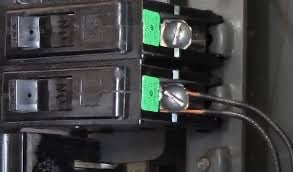Why You Should Never Double-Tap a Breaker
Double tapping a breaker is a simple solution when you need to power an additional circuit but lack available breaker slots. But here’s the hard truth: Most cases classify double tapping as a code violation, creating serious fire risks. This section will explain double-tapping and why it’s hazardous while suggesting safer alternatives.
BLOG
4/14/20252 min read


What Is a Double-Tap?
Most standard circuit breakers cannot support two wires connected to a single terminal, yet double taping is the exact practice. The breaker terminal screw is designed to hold just one conductor according to standard ratings unless the manufacturer specifies differently.
Why It’s a Problem
1. Loose Connections = Heat
When a screw designed for one wire holds two wires together, they can become loose over time because of expansion and contraction. Resistance caused by loose connections generates heat buildup. The generated heat can damage the breaker and wire insulation while posing a fire risk inside the electrical panel.
2. Uneven Clamping Pressure
The screw fails to provide uniform pressure when connecting two wires, which becomes problematic if the wires vary in size. The uneven clamping pressure results in electrical arcing, which creates hot spots and nuisance breaker trips or potentially fails to trip the breaker when needed.
3. It’s Against Code
The NEC 110.3(B) regulation mandates that all equipment installations follow the manufacturer’s instructions. Using a breaker that doesn’t specify support for two conductors constitutes a direct violation of the regulations.
4. Creates a Diagnostic Nightmare
Troubleshooting becomes more difficult when two circuits share one connection because it’s harder to find where the issue occurred if a breaker trips. Troubleshooting delays from improper breaker connections creates risks for people and properties during emergencies.
Exceptions: Are Any Breakers Rated for Two Wires?
Specific breakers exist which are built to accommodate dual conductor connections. Dual wire terminals exist on some Square D QO and Siemens breakers but remain rare exceptions rather than standard practice. Verify the breaker specifications through labels or documentation before making assumptions.
Safer Alternatives
Avoid double-tapping by choosing from safer alternatives.
· If your panel design supports them, install a tandem breaker to handle the load.
· Add a subpanel to expand capacity.
· Employ a listed splice and pigtail to join two wires into one conductor, which connects to the breaker.
Bottom Line
A breaker accommodating two wires does not guarantee safety or legal compliance. Double tapping qualifies as a minor shortcut, which can result in significant issues. Always follow code, trust manufacturer instructions, and remember: The electrical panel should not be treated as an area where you can take shortcuts.
Contact a certified electrician to assess and fix any double-tapped breaker in your home to prevent potential hazards.
ShockTalk: Your Code-Safe Guide
We help electricians, contractors, and DIYers build safer systems with real-world electrical expertise and simplified NEC guidance.
Expertise
Want Tips from a Master Electrician?
Email: info@shocktalk.org
Support Hours: Mon–Fri, 8am–6pm CST
817-716-1579
© 2025. All rights reserved.
